The Arapawa goat comes from Arapaoa Island and is a dual-purpose breed, meaning it can be used for both milk and meat.
It is one of the last Old English milch goats, a wild breed that no longer exists in England.
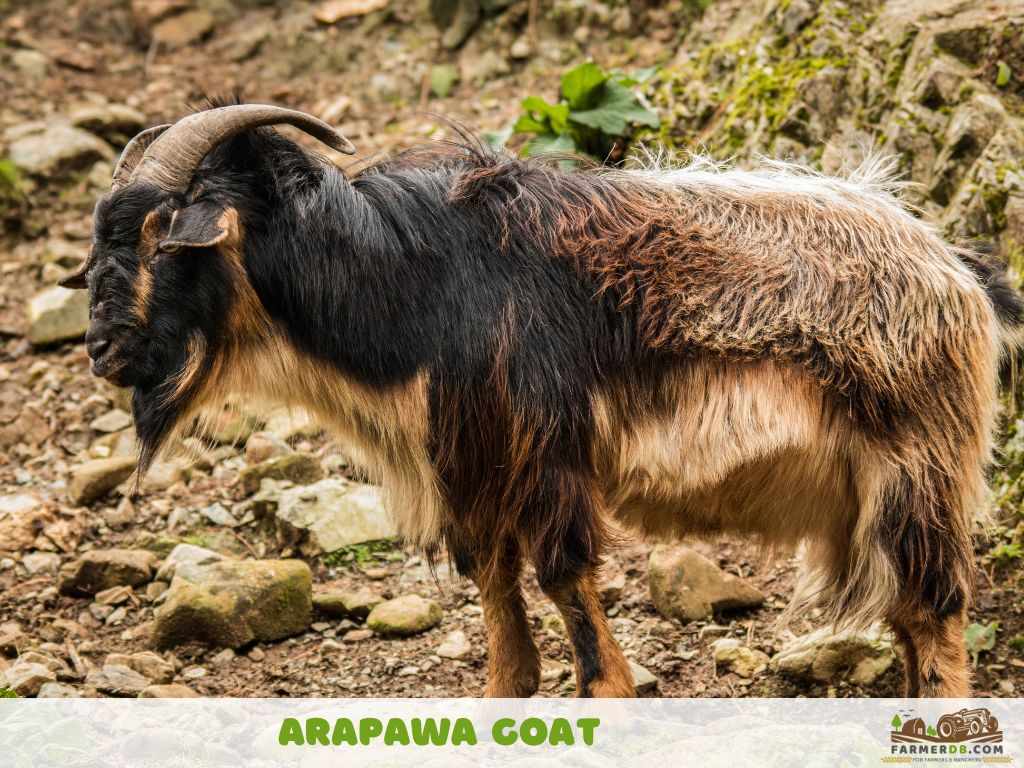
Its exact history is unclear, but some believe European settlers brought them in the 1830s when they built a whaling station on the island. The first record of goats there was in 1839.
For a long time, the goats lived freely and multiplied. People hunted them, and in the 1970s, there was a plan to remove them completely because they were thought to be harming the island’s native forest.
That is why, in 1988, the Rare Breeds Conservation Society of New Zealand was founded to help protect them.
Another important effort came from Betty Rowe, a local resident. She, along with her family and helpers, worked hard to save the goats. Thanks to her dedication, a small group survived, and some were even sent to the USA in 1993 and the UK in 2004. Betty continued caring for the goats until she passed away in 2008.
The Arapawa goat is very rare, with only a small number left. The Livestock Conservancy classifies it as “Critical”. In 2019, there were 211 goats in the U.S. In 1993, New Zealand had up to 200. In 2012, Britain recorded 155.
Contents
DNA Research
Scientists examined the DNA of Arapawa goats in 2018. Their findings proved that these goats are a special modern breed.
Historical records suggest that their ancestors were goats introduced by Captain James Cook in 1774 and 1777. After living on Arapawa Island for many years, they developed into what is now known as the New Zealand Arapawa goat.
Characteristics
Color
Arapawa goats can have various colors, including black, brown, fawn, white, ginger, or mixed patterns. They also have distinctive facial markings, usually with dark brown or black stripes.
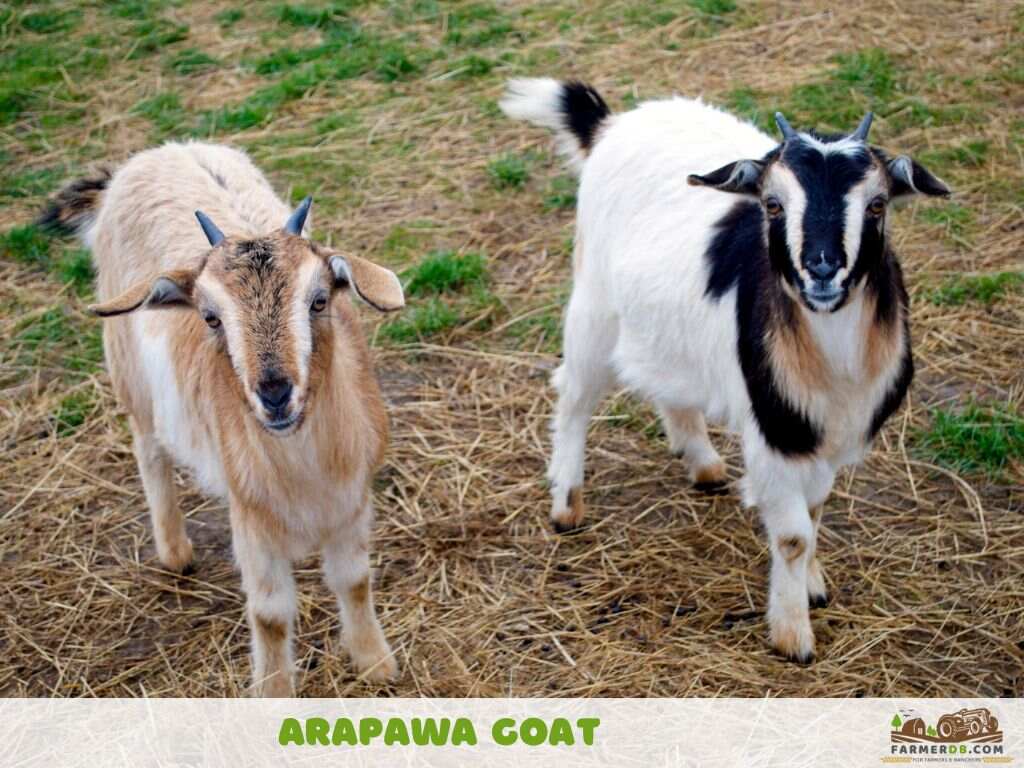
Head, Face, Ears
The males have a stronger head, neck, and front, while the females are more refined. They have long, narrow faces with dark brown or black stripes, making them easy to recognize. Their small ears are set high on the head.
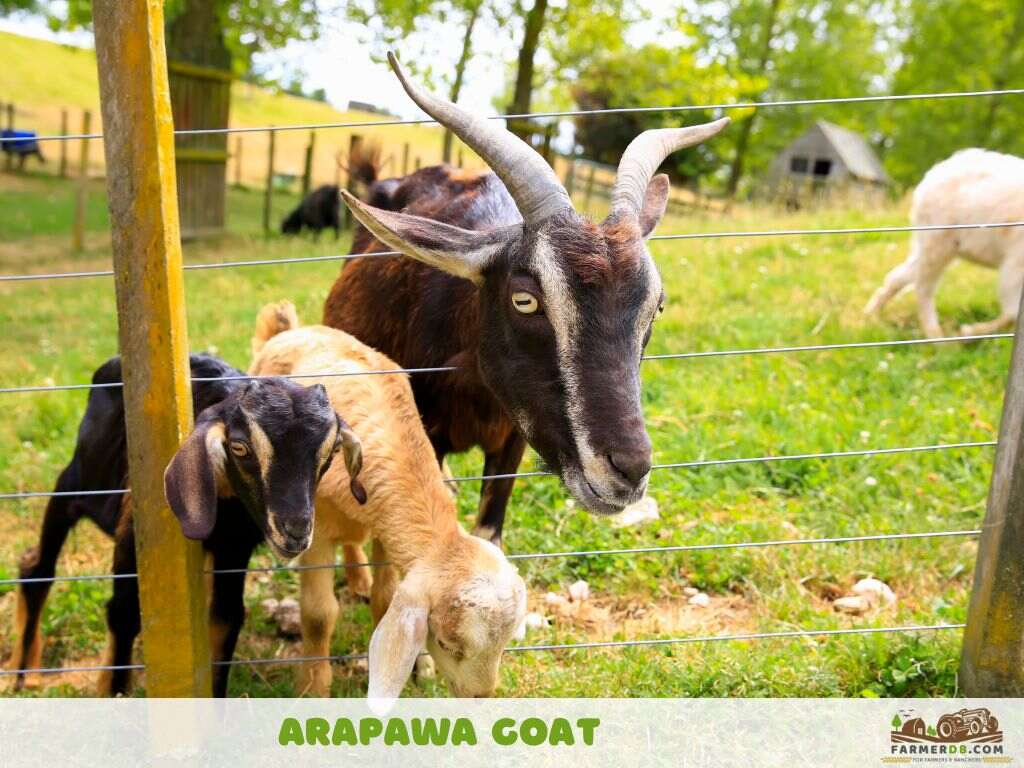
Eyes
The eyes are full of life, always bright and watchful. They have an amber-colored iris and a black pupil.
Horns
Both males and females have horns, with the does’ curving backward and the bucks’ curling outward.
Back, Loins, Croup
The back is wide and straight, often with a dark stripe or shading along the spine. The loins are strong and connect to a broad croup. The croup follows the backline with a gentle slope, making kidding easier.
Legs
The goat’s front legs are proportional to its body. They are strong, straight, and well-positioned, with solid pastern joints and dark hooves.
Coat
In cold months, Arapawa goats grow a soft, thick undercoat for extra warmth. Their coat is glossy and well-kept, staying free from dirt and parasites. The hair may cover the entire body or be longer on the back legs (petticoat), with some fringe along the spine.
Size
Arapawa goats are small and lightweight, but some classify them as medium. Adult females stand between 24 and 28 inches (61 and 71 cm) at the withers, while adult males reach 26 and 30 inches (66 and 76 cm).
Lifespan
This goat can live up to 15 years. This breed is quite long-lived, and in captivity, they can live even longer than those in the wild.
Growth Rate
How fast do they grow?
These goats are known for their slow growth rate compared to other breeds.
They require more time to reach full size than other breeds. As for their daily weight gain, information is limited due to their rarity, but based on general data, they may be capable of gaining around 0.35 lbs (approximately 160 g) per day.
Weight
The adult weight of these goats is between 60 and 125 lbs (27–57 kg). Does weigh 60 to 80 lbs (27–36 kg), while bucks can reach up to 125 lbs (57 kg).
Temperament
Arapawa goats are smart, active, and independent but can be very friendly if they are trained early. They might be nervous around strangers at first because they come from the wild, but they are gentle in a safe environment. They build close bonds with both their goat herd and human caregivers.
They are excellent escape artists, able to fit through small spaces and jump fences, so they need secure fencing.
Meat and Milk
Even though Arapawa goats are a dual-purpose breed, they are not used for commercial meat or dairy production because of their small size. Instead, they are raised for small-scale farming.
They do not produce as much milk or meat as other goat breeds.
The small amount of milk they give is known for its rich, creamy texture because it has a higher butterfat content.
Their meat is lean and tender, with a flavor similar to a mix of mutton and venison.
Raising
Feeding
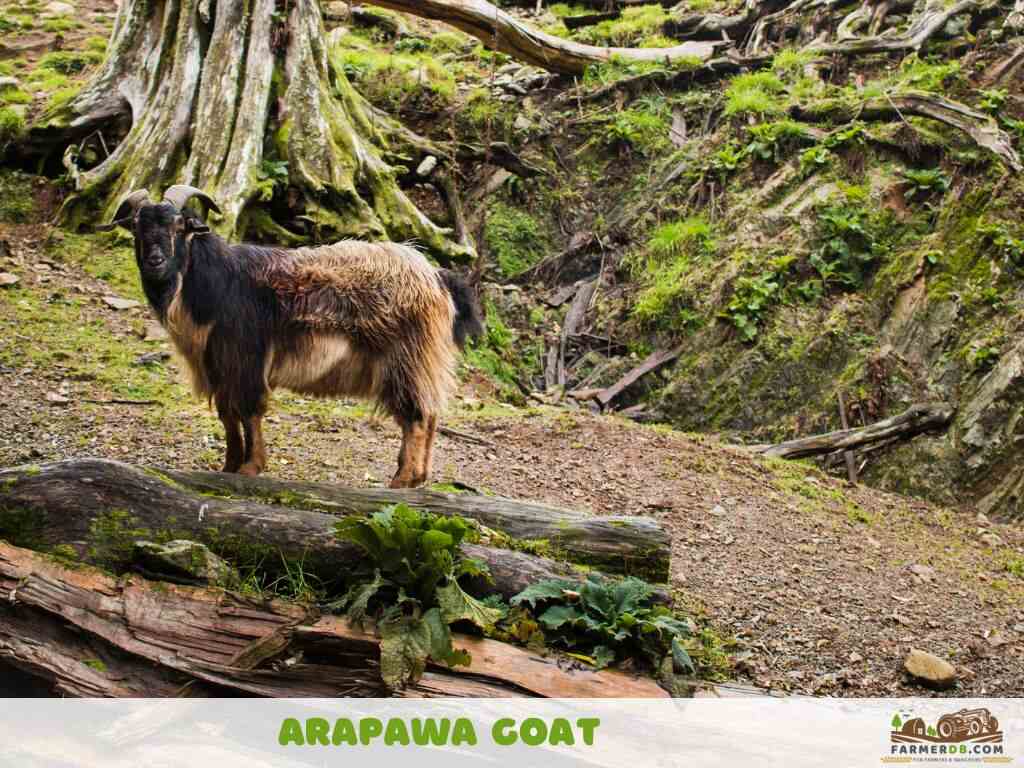
Arapawa goats can eat different types of food, so you can feed them pasture and browse. They love to graze and will eat grasses, weeds, and leaves. You can also use them for clearing brush, as they eat shrubs, twigs, and small trees.
If pasture is limited, you can offer them good-quality hay, such as alfalfa or grass hay. Grains can also be added to their diet. You can choose oats, barley, or corn, but you should give them only small amounts to avoid digestive issues.
You should also include goat-specific mineral supplements in their diet, along with salt blocks containing important minerals like calcium and phosphorus.
If you want to give them treats, you can occasionally offer fruits and vegetables such as carrots, apples, bananas, and pumpkins.
In their living area, you must provide a constant source of fresh water, which they should always have access to. In winter, make sure the water does not freeze.
Environment, Climate, Shelter
These goats can live in different environments, but they do best in free pasture or areas with natural browse like forests and brushy land. They are hardy animals and can adapt to various climates, but they prefer mild to warm temperatures.
They do not like very wet or extremely cold weather. Because of this, they need a proper shelter where they can stay dry and protected from rain, wind, and snow. A simple barn or three-sided shelter is enough to keep them comfortable. In hot weather, they also need shade to stay cool.
How many goats per acre?
In areas with good pasture and grass, you can keep about 6 to 8 goats per acre.
If the land has mixed forage with brush and shrubs, you may raise 4 to 6 goats per acre. In dry or poor-quality land, where plants do not grow well, you may only be able to support 2 to 4 goats per acre.
If you provide extra hay and grain, you can keep more goats, but they will still need space to move and graze. No matter the land type, it is important to rotate grazing areas to keep the pasture healthy and prevent overgrazing.
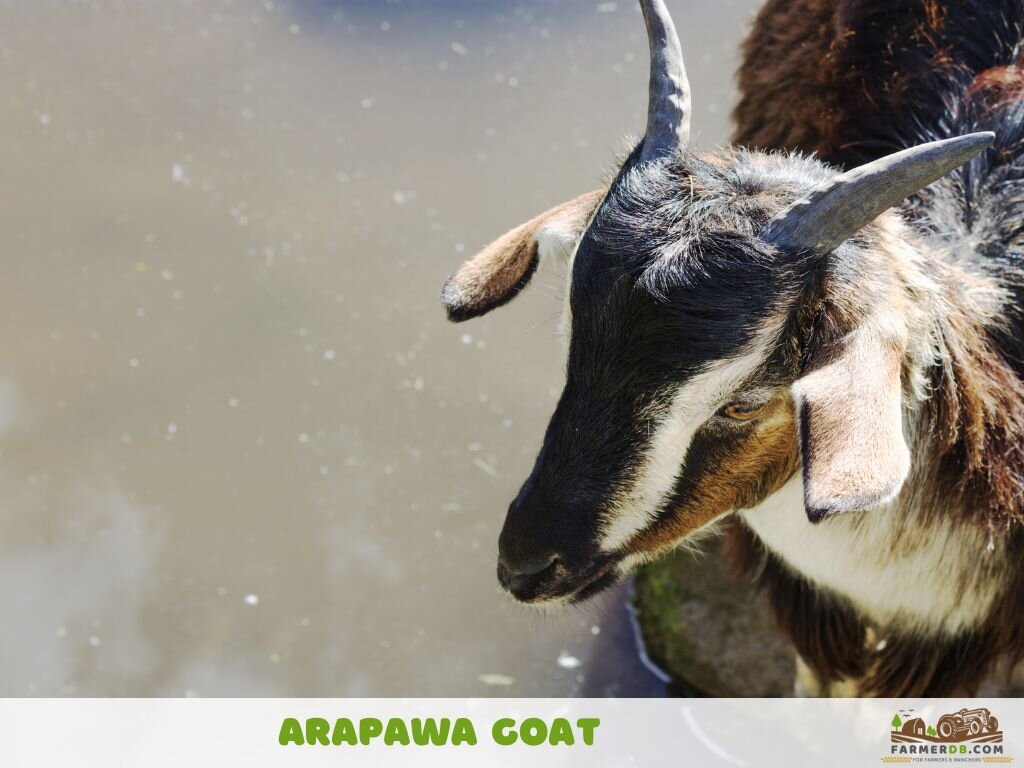
Advantages
- Adaptable
- Good for brush control
- Unique heritage breed
- Good temperament if trained
- Low maintenance
Disadvantages
- Small size
- Slow growth rate
- Rare and hard to find
- Escape artists
- Not good for commercial farming
- Limited information available
Do you have any experience with the topic discussed here?
Would you like to improve the information shared and contribute your practical knowledge on the subject?
Your real-world experience as a farmer or rancher could greatly benefit other members, and the community would deeply appreciate your contribution.


